Words: Luca Schiera
Photos: Achille Mauri
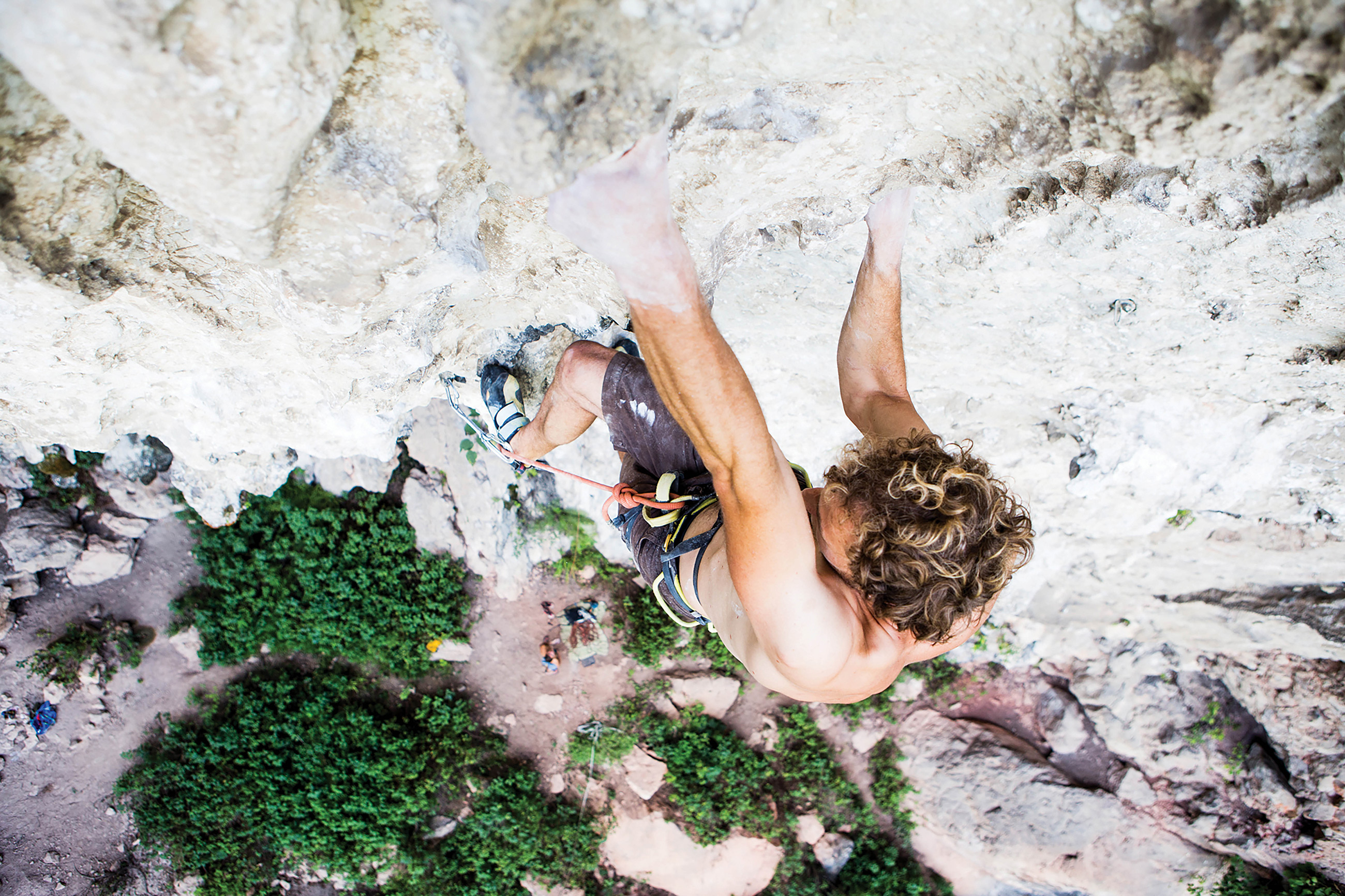
Words: Luca Schiera
Photos: Achille Mauri
There were an Italian, a French and a German guy. No pun intended, I just would like to tell the story of a trip to China to find new walls to climb. A trip that has turned into something else.
The Frenchman is Corrado Pesce, also known as “Korra”, a great mountaineer born in Novara but who has been living in Chamonix for years. The German is one of the most complete competitive climbers in Europe, Roland “Rolo” Hemetzberger. And then there was me, Luca Schiera, a climber from Ragni di Lecco.
The idea of a trip like this, completely new to us, was born under strange circumstances. Kapriol, a historic company from Lecco region and based in Civate, decided to link its brand to the mountain because of its 90th anniversary and find three promising young climbers to work with in order to create its own team and support an international expedition. Where? An unexplored area of Balagezong, in the Yunnan peninsula, near the Tibetan border. It is a mountain that reaches high altitudes, very technical, that seemed to us the perfect opportunity for a very diverse team of people. The goal was a limestone wall only seen in photo but never climbed. We were going to have three whole weeks to climb these mountains that exceed 5000 m, open new routes and complete the project.
We left in September and met up at the Bangkok airport, before flying to Kunming. As soon as we landed, we immediately began to travel a lot throughout the south of the country. We felt a bit lost at the beginning and had some difficulties but in the end we managed to take a night train to the western region and arrived in Lijiang. Here we stopped for a couple of days to climb Shigu’s cliffs, an area that is fast developing and maybe the most promising we visited.
We started climbing and, driving a few hours off road, we arrived in Shangri-La, a tourist area from where you can continue to the mountains. A few hours later, in Balagezong, we were welcomed in the worst way: it was raining hard and we were immediately recognised as climbers as soon as we entered the park. We had a long negotiation with the staff to obtain the permits. All that has been complicated by the language, but even they did not seem to understand each other very well between themselves.
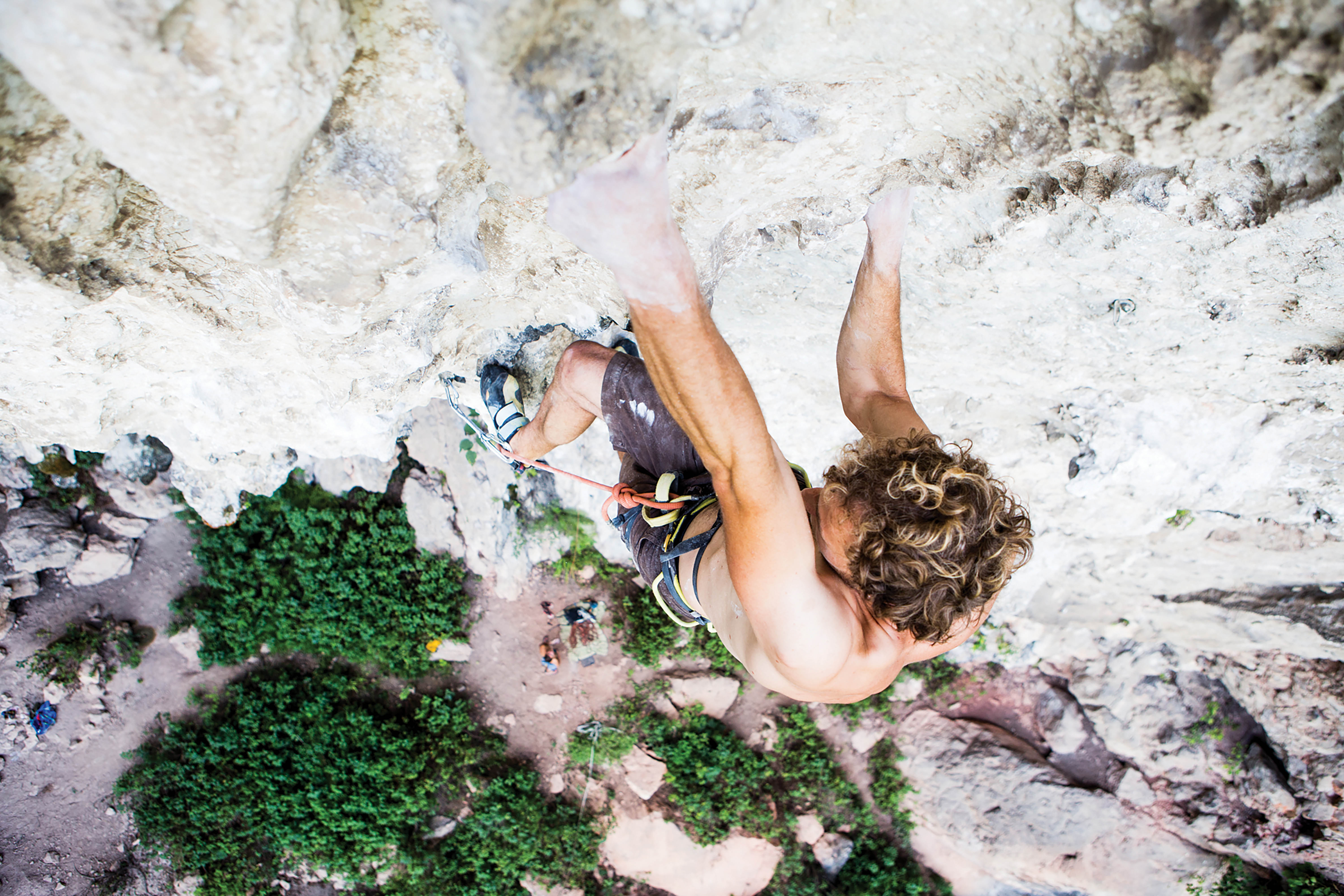
“After a few hours we reached an agreement: we had permission to climb everything we wanted except for seven walls. The walls in total were exactly seven, so they we telling us to go away”
“We had been kicked out. It wasn’t about permission, the locals made clear we were not welcomed in that park but we didn’t understand why, maybe the real problem was being close to Tibet”
We had no visa problems or missing permissions, since they were not necessary. None of us understood the reason why. Was the problem being so close to Tibet? Or the fact that these mountains were sacred? We had no way to reach them, we were unpopular either by the locals and by the authorities and the monsoon gave us no rest. We discussed for a while and then decided to change destination and started our long journey to discover different wonderful places.
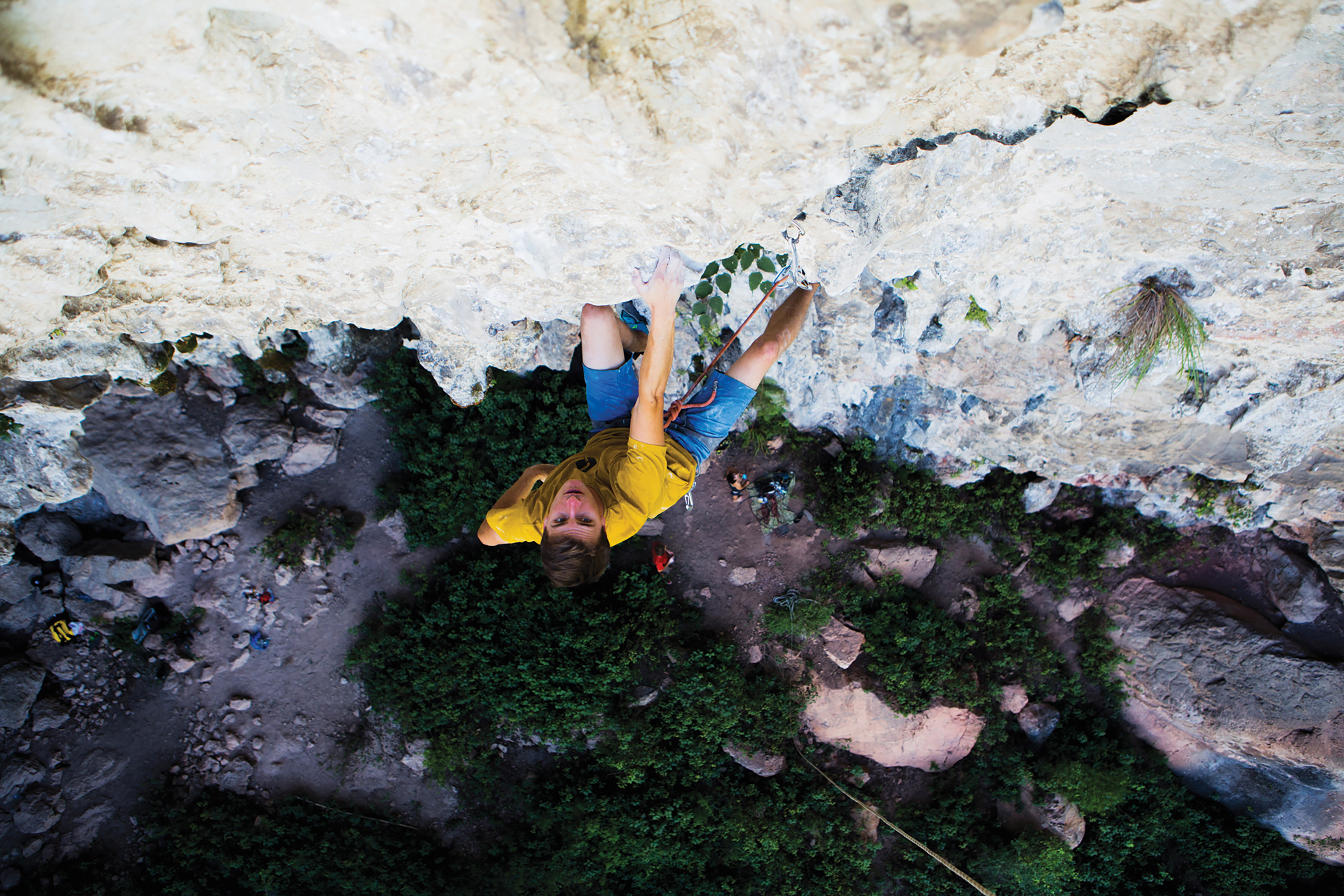
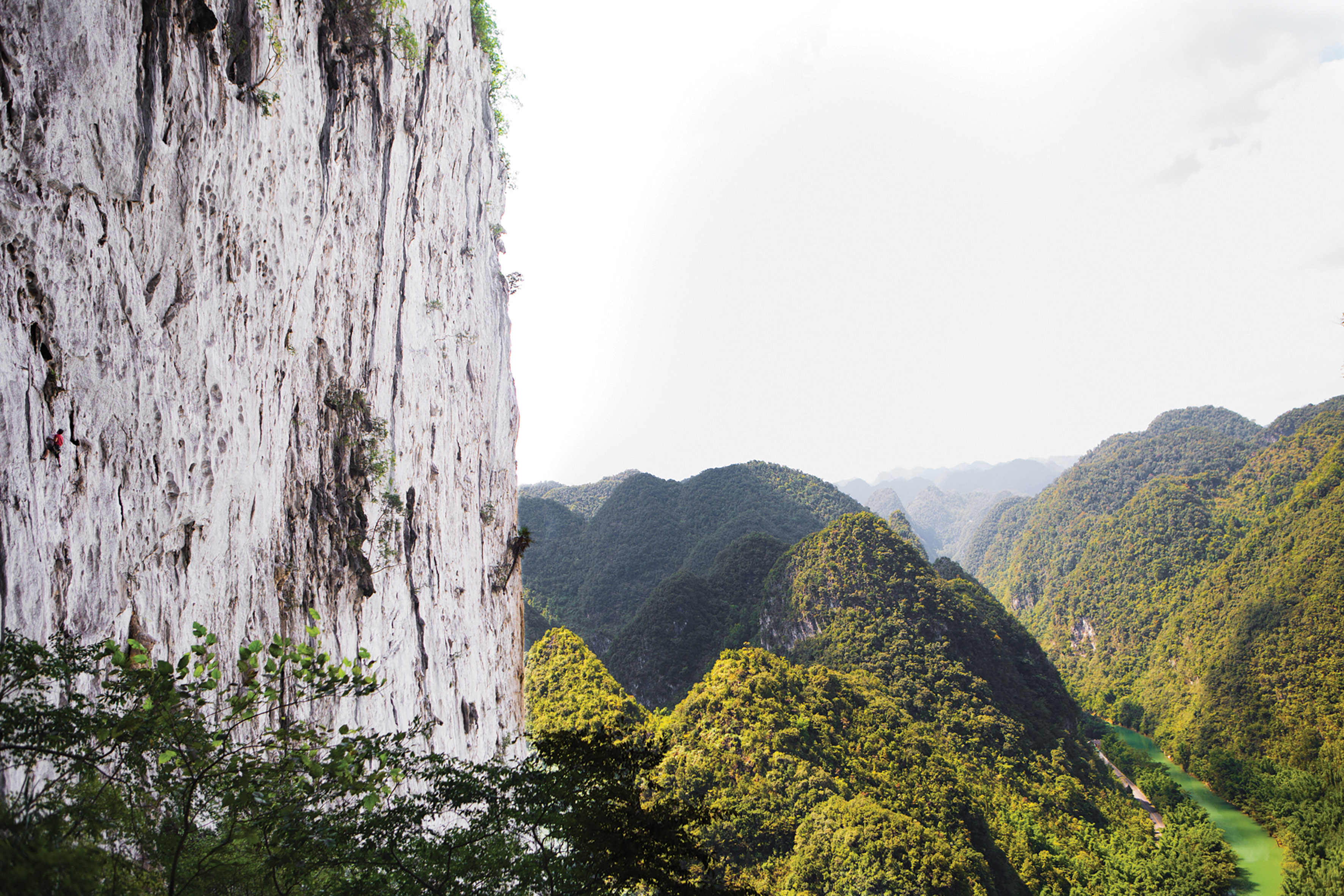
We went back to Shigu and changed our trip plan: we decided to visit all the main climbing areas in the country. First we left for the great arch of Getu, an impressive limestone formation a few miles away. In about ten days we explored its different parts already rigged and climbed a surreal route on the vault of a natural cave over 50 meters high.
We continued our journey to the north and arrived in Zhangjiajie, famous for its sandstone pinnacles, but the scenario was similar to the one of Balagezong: heavy rain and prohibitions everywhere. In the meantime Achille Mauri joined us to take some pictures. Despite a broken drone, some failed tentatives, a night spent on the floor of a station and countless linguistic difficulties, Achille still seemed to enjoy our company. Finally, after a journey of almost 2 thousand kilometres, we arrived in Yangshuo, perhaps the most important area of all Asia with the largest climbing site in the country, characterised by rocky mountains covered with vegetation rising up between rice fields. The view was beautiful, the climbing routes endless and the city was very touristic. The only negative thing was the unbearable heat and the humidity.
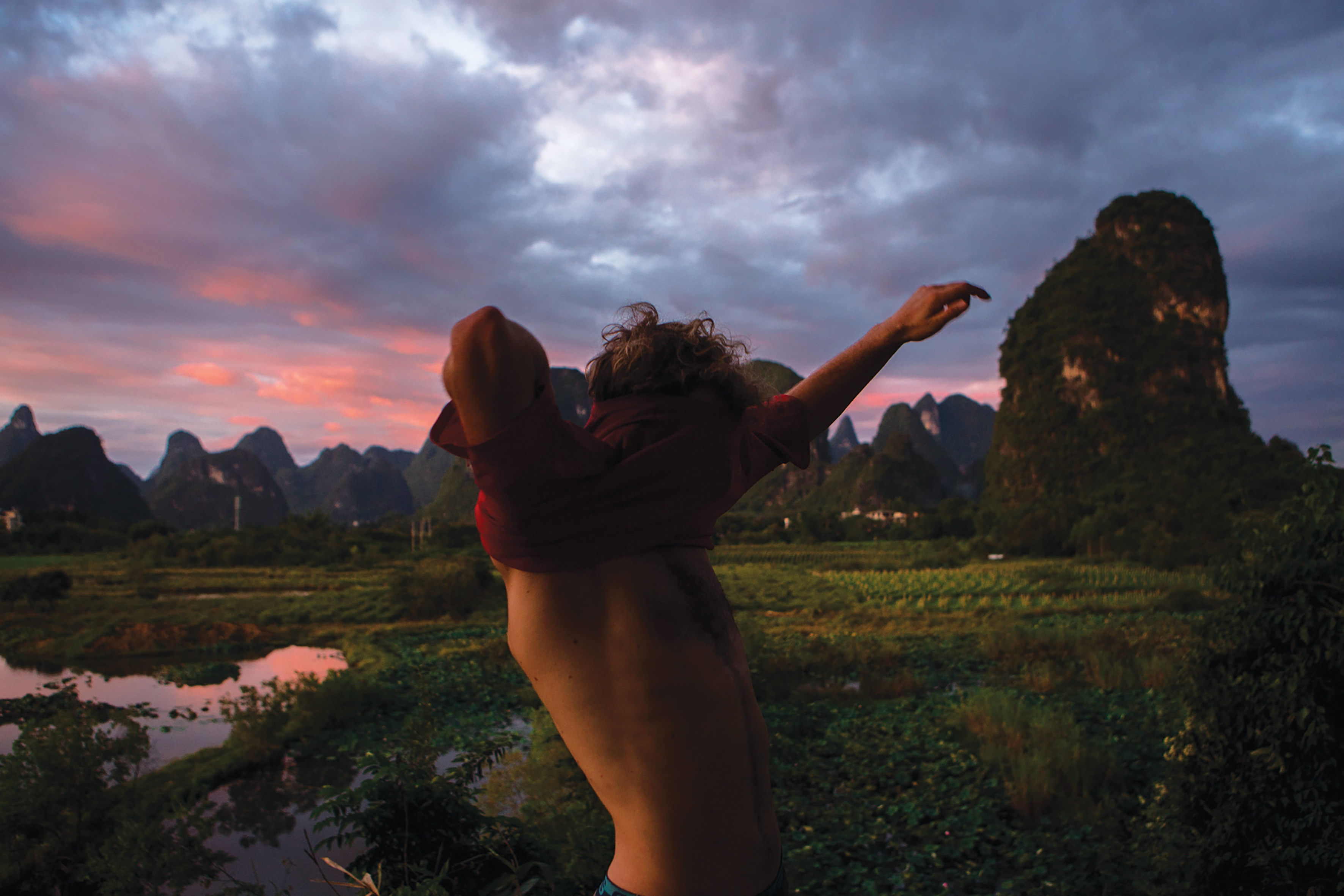
We used to go out early in the morning, mainly climbing the same cliffs and following always the same routes. The go back in the evening through the rice fields, trying not to worry too much about the snakes and trying to adjust to such a different climate for people used to the Alps. We ended this trip, completely different from what we had thought, with the last train to Kunming. This expedition did not bring us where we wanted although it had an unexpected but pleasant twist: we had the chance to travel, to get to know and relate to the mountains, to the climbing sites of the country and to its people.
“There were snakes everywhere but we were ready for them. The mountains were full of vegetation but some parts were free of it and the rocks were amazing”
Share this Feature